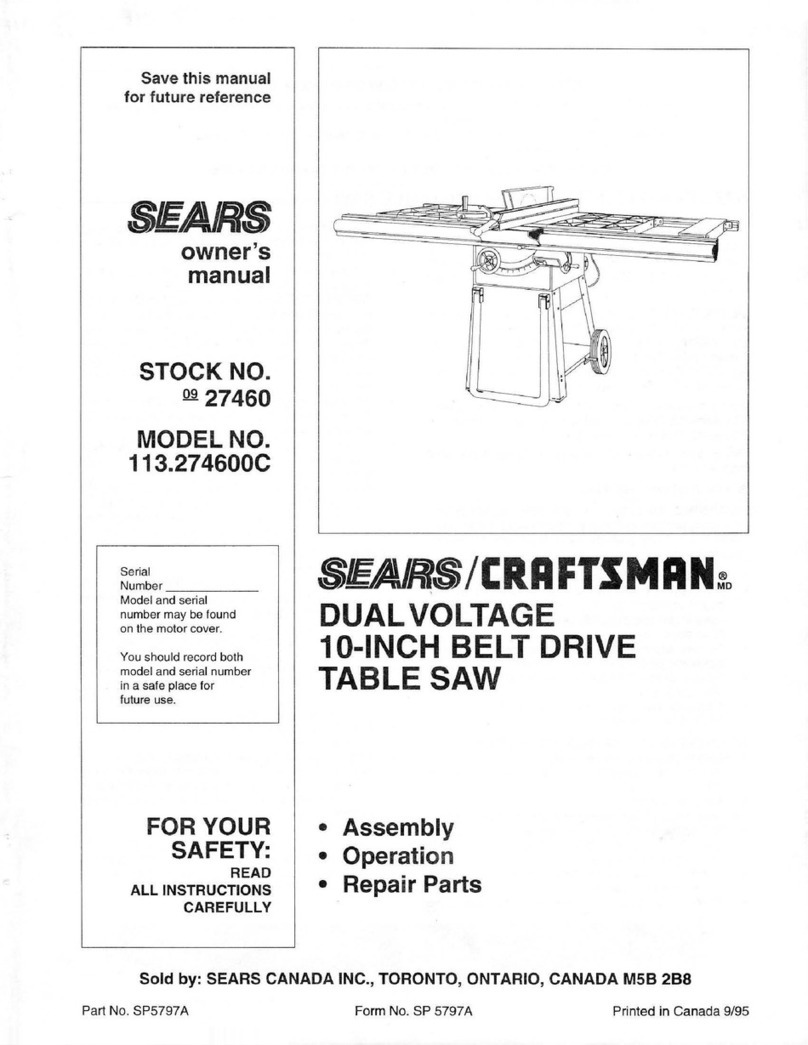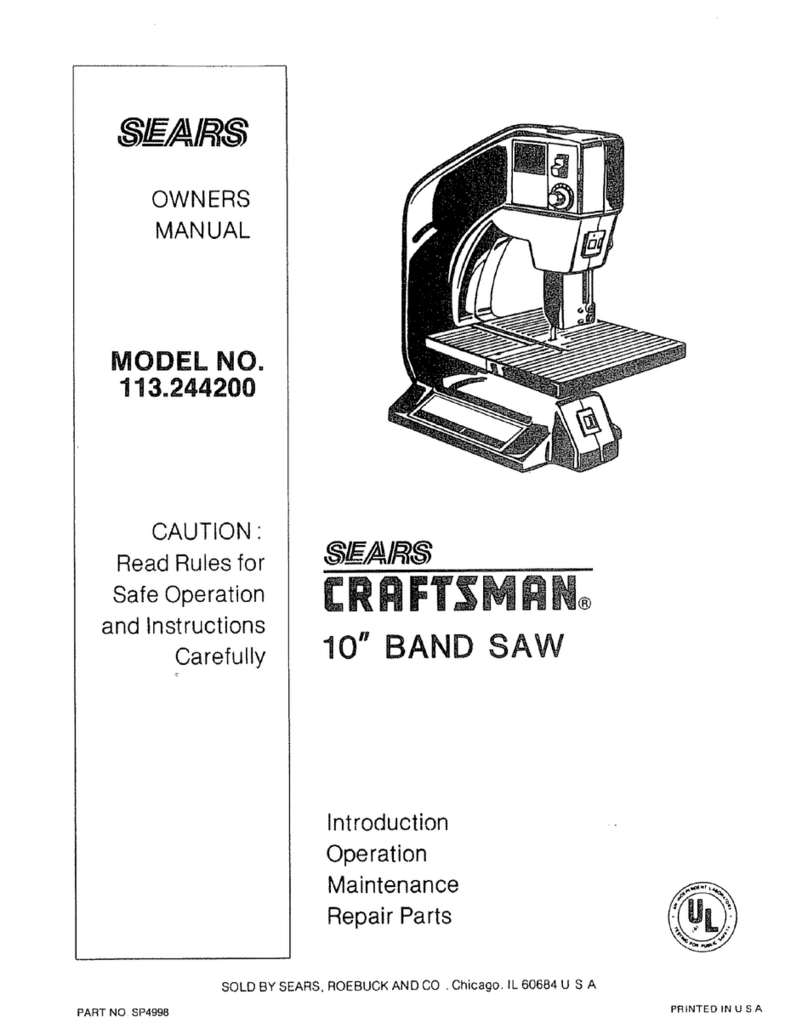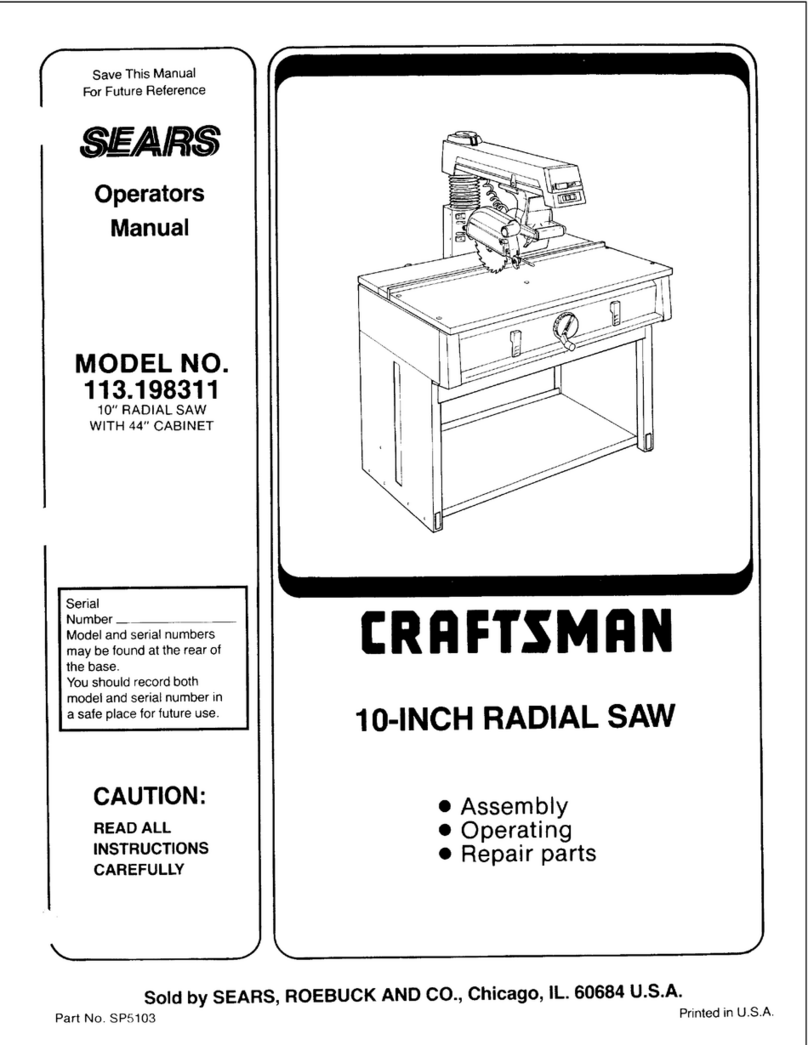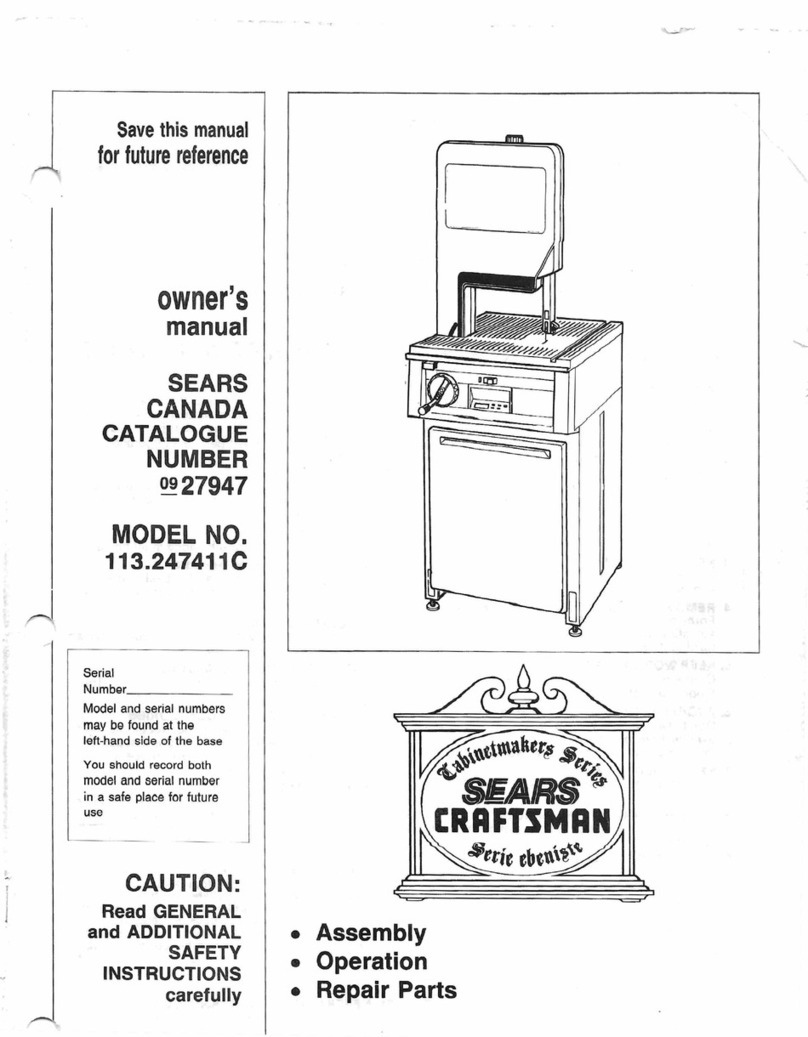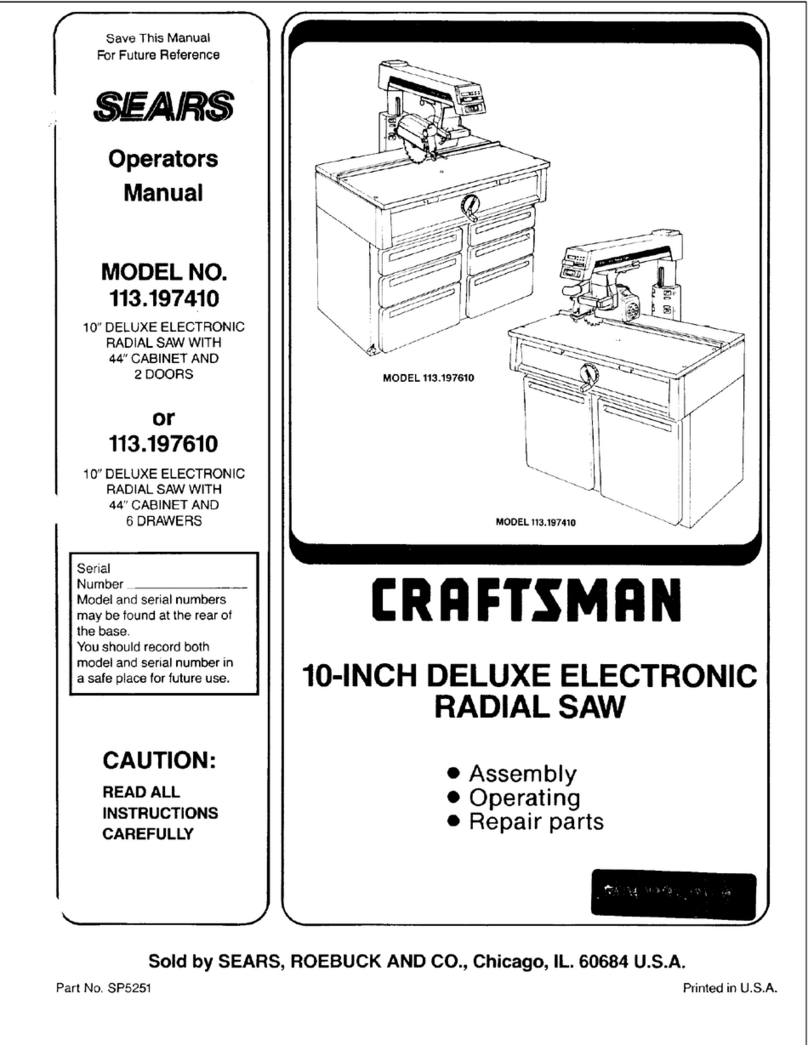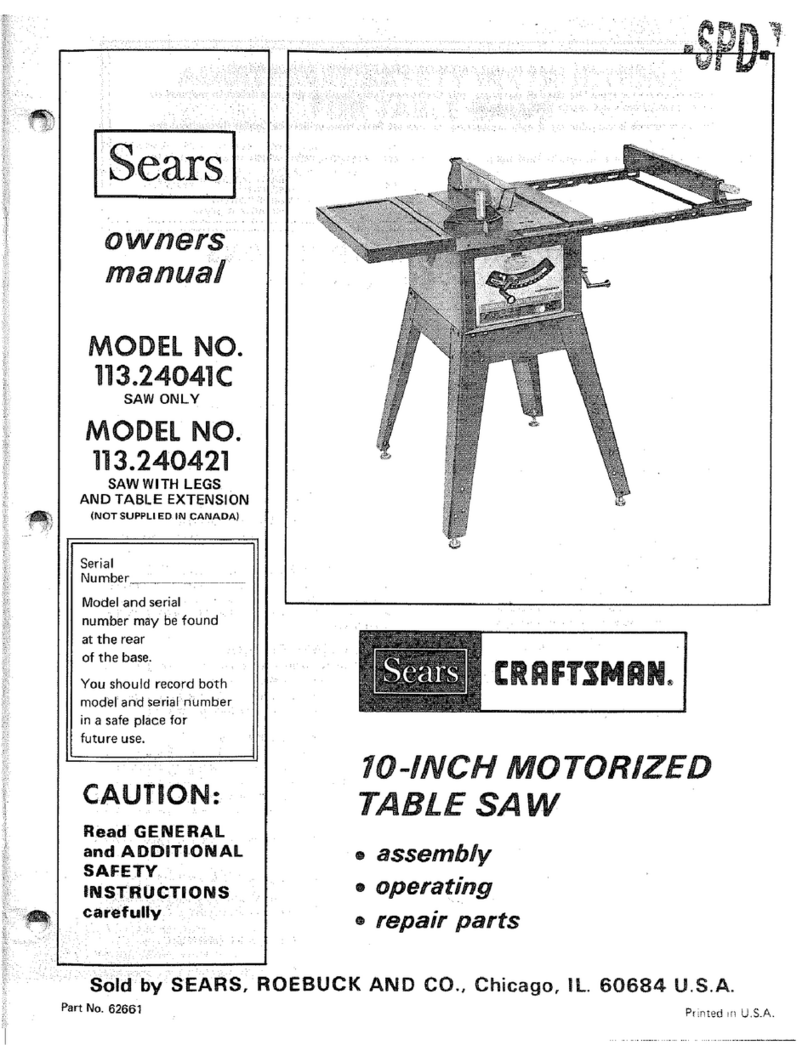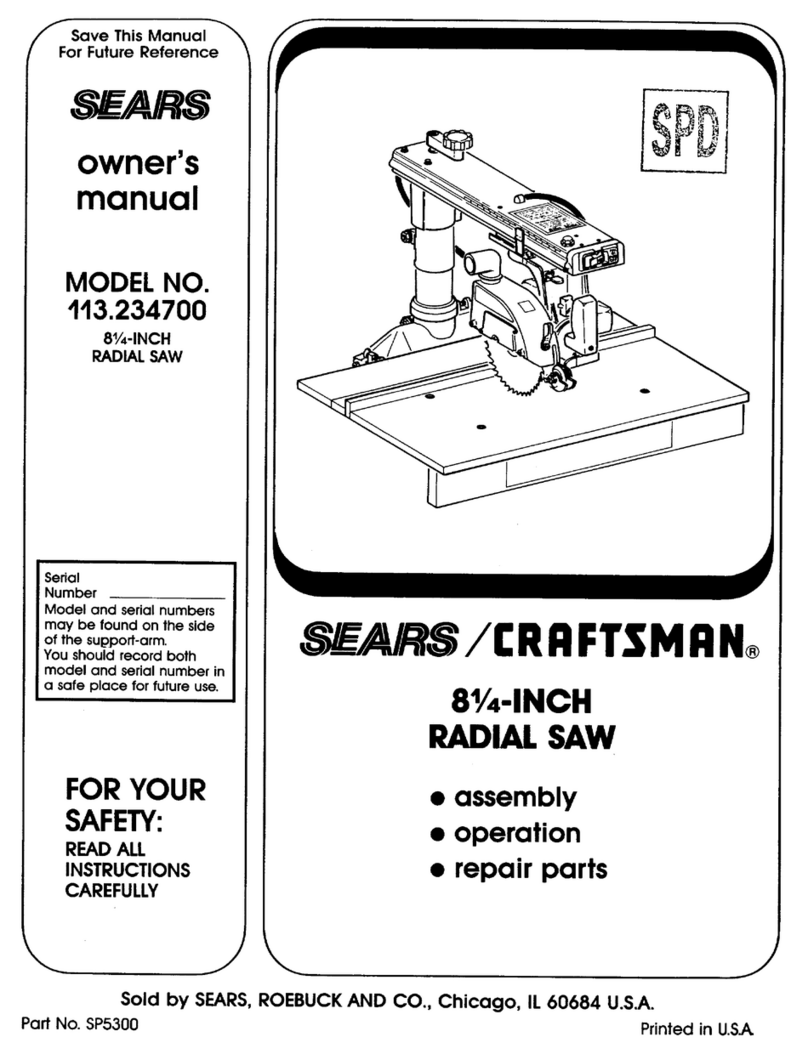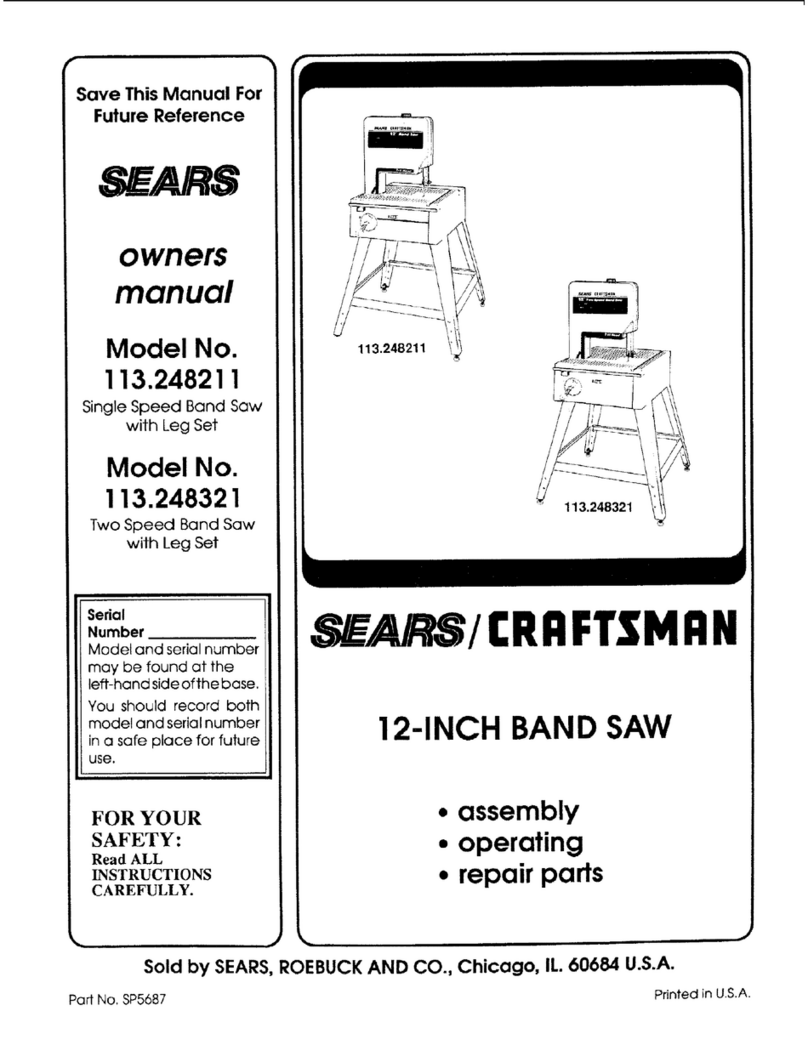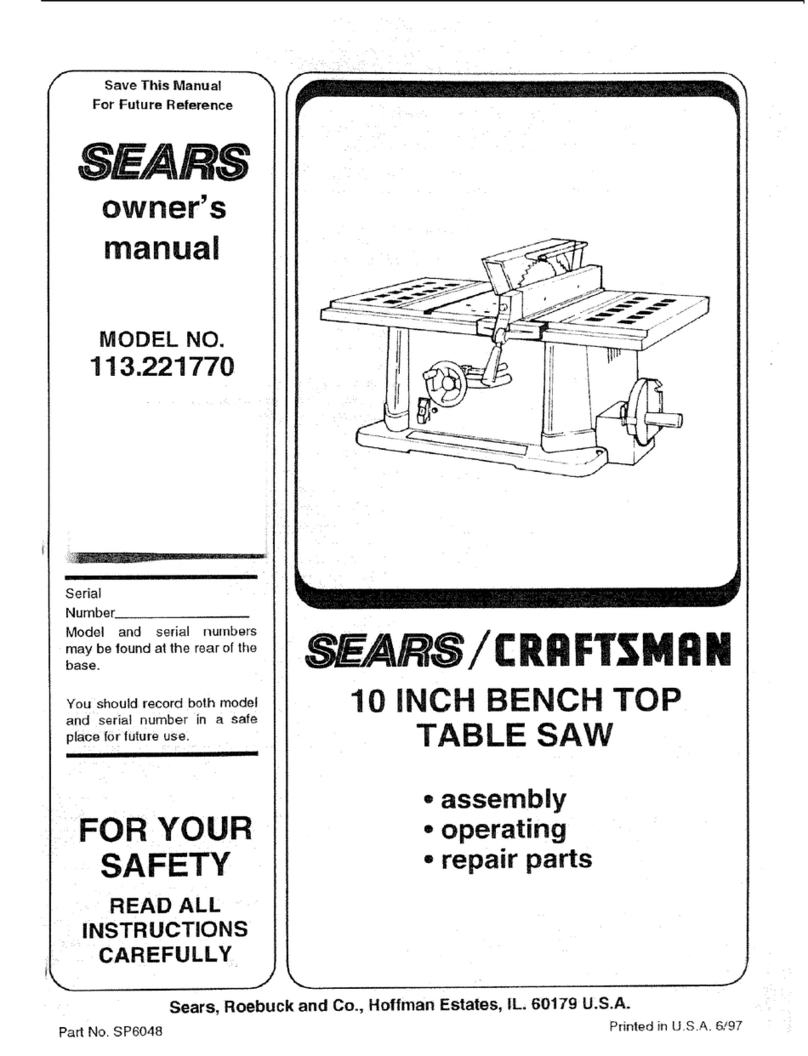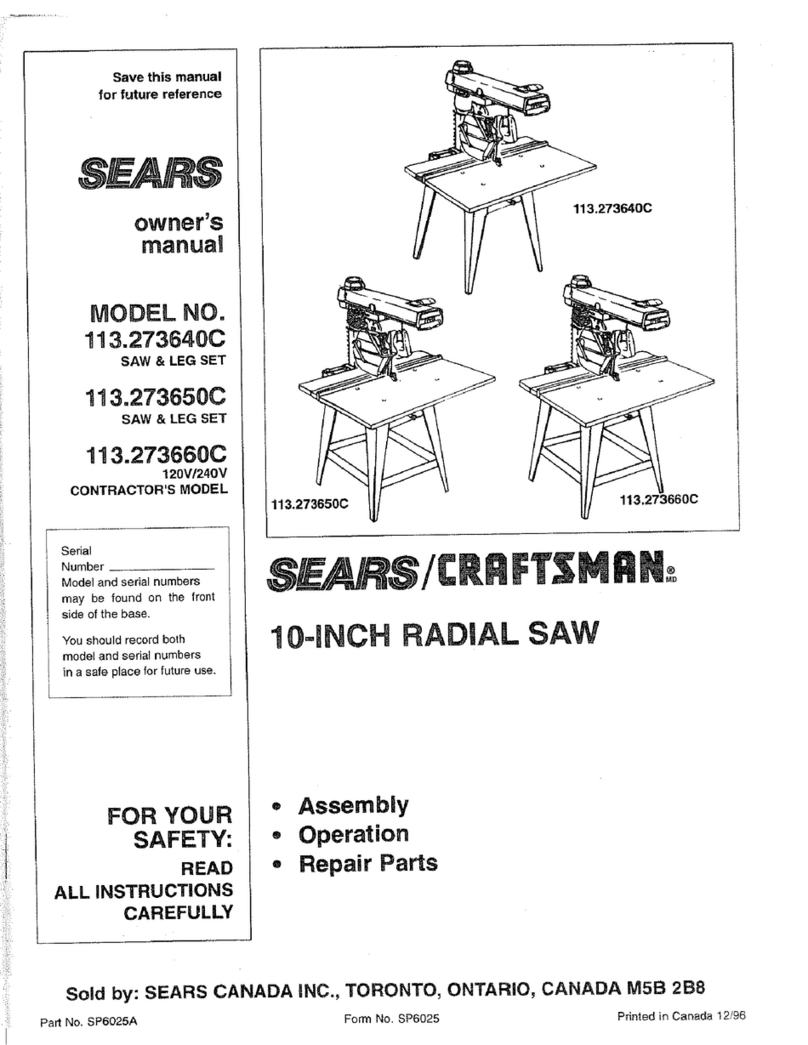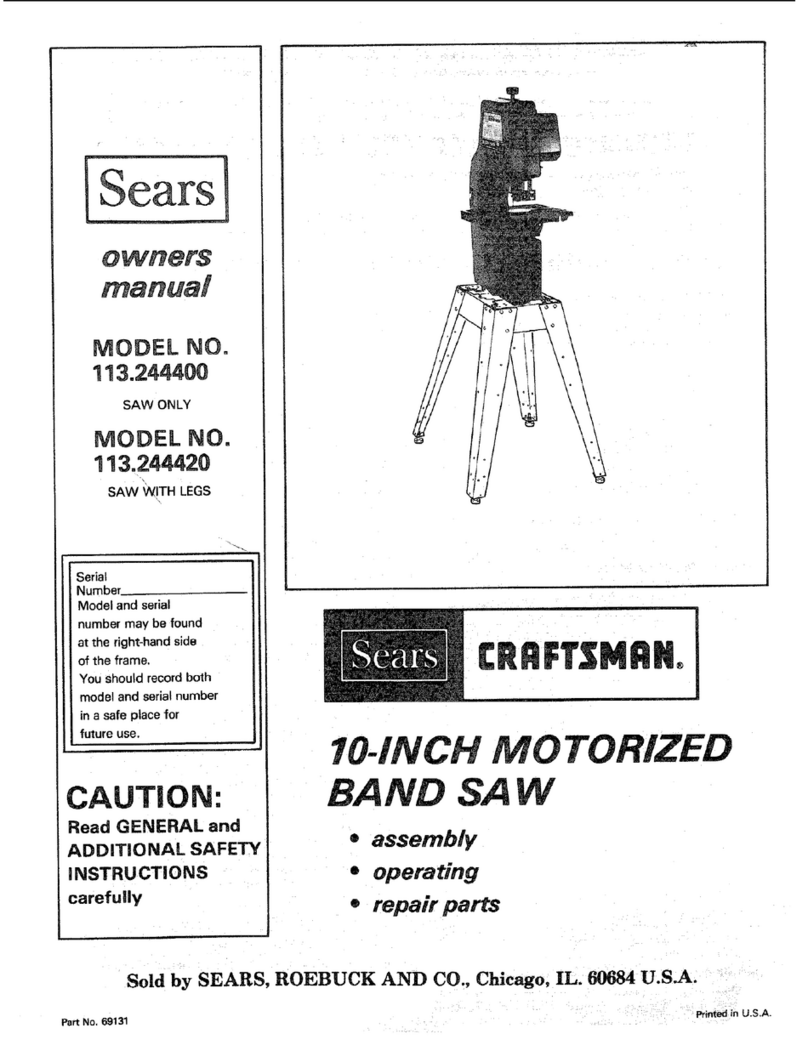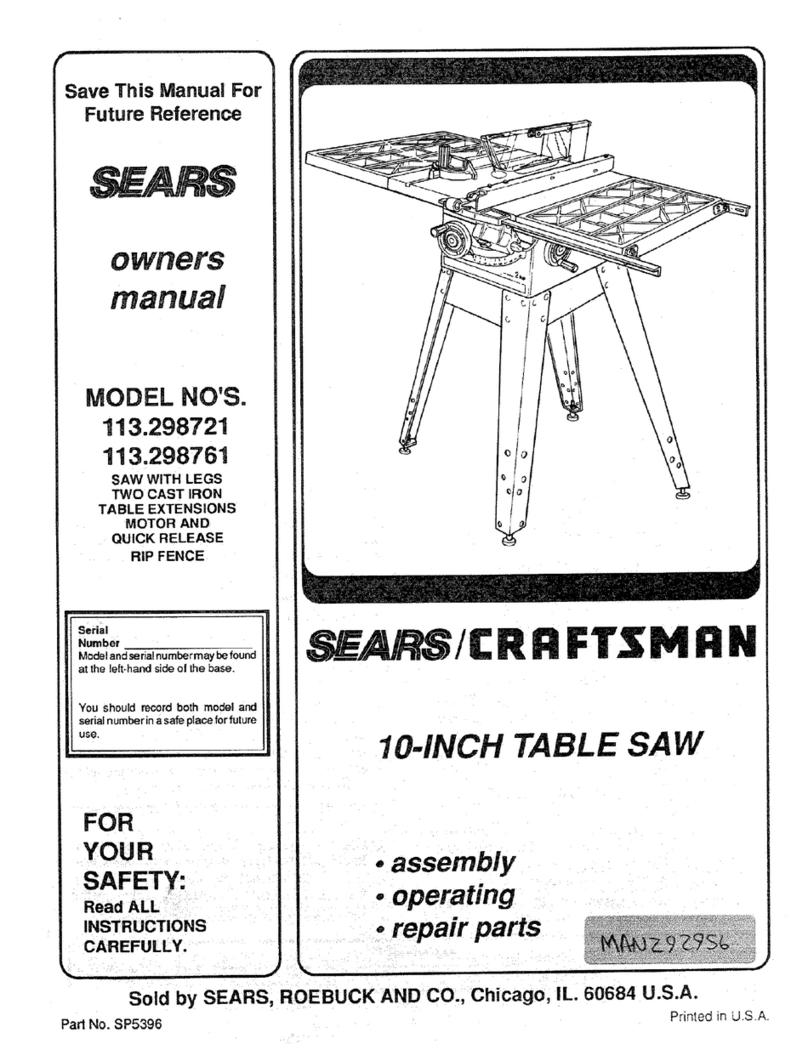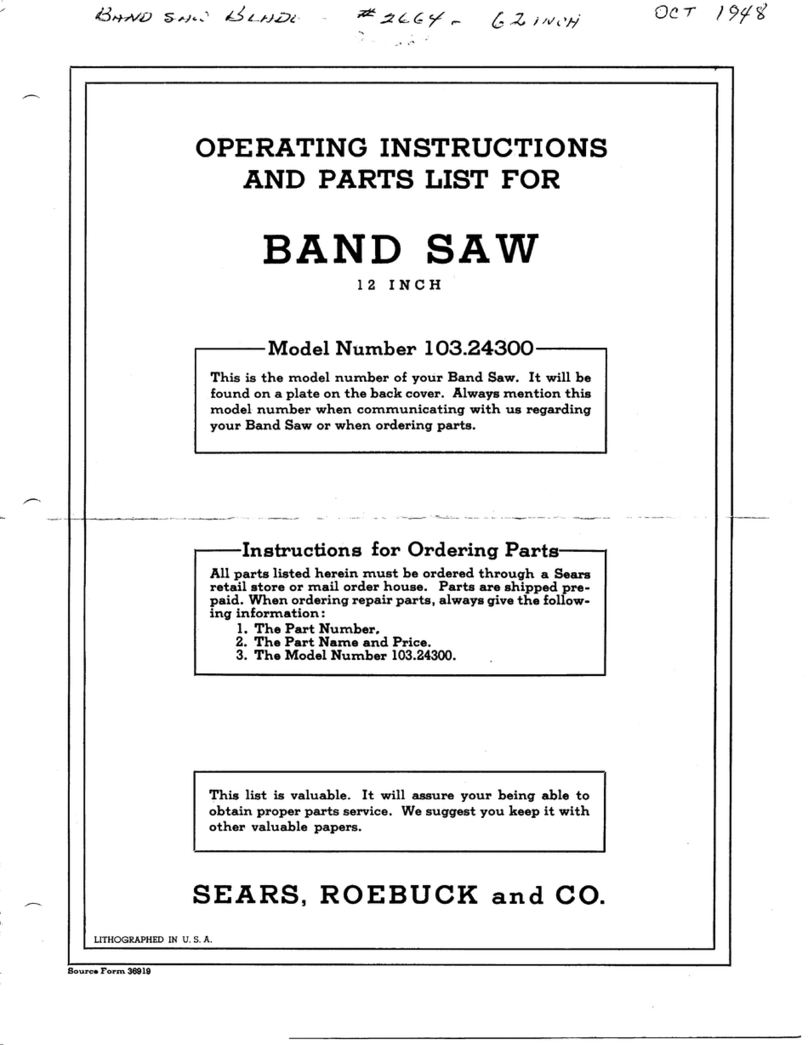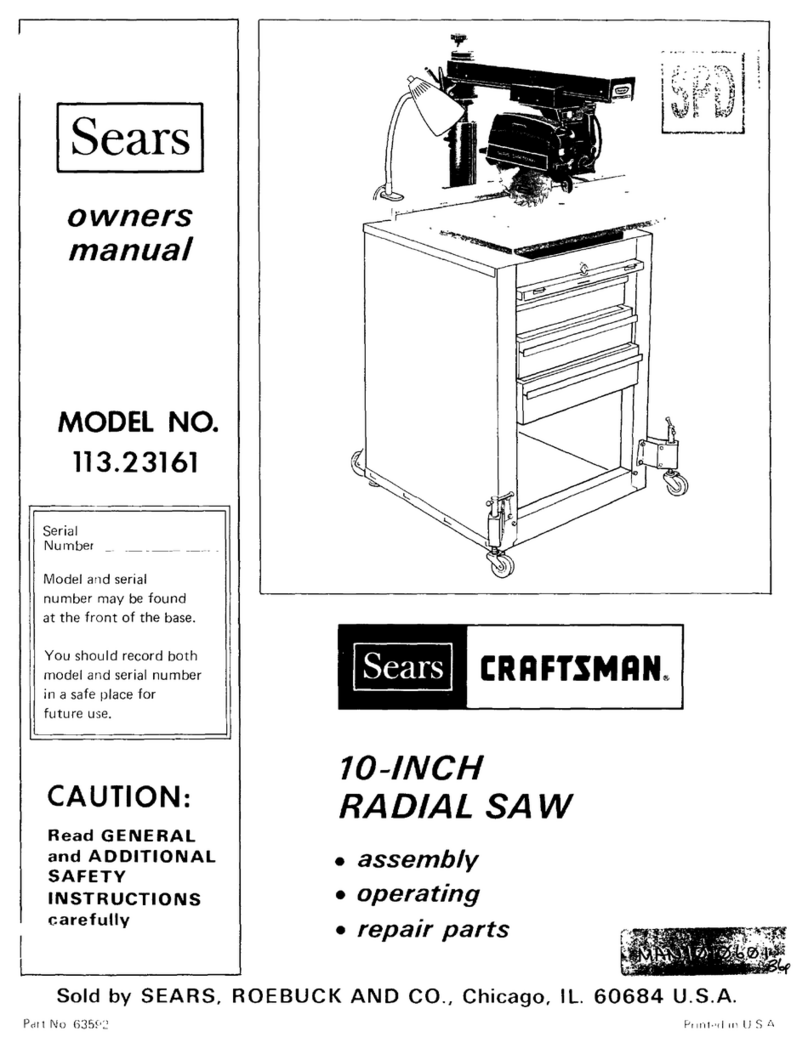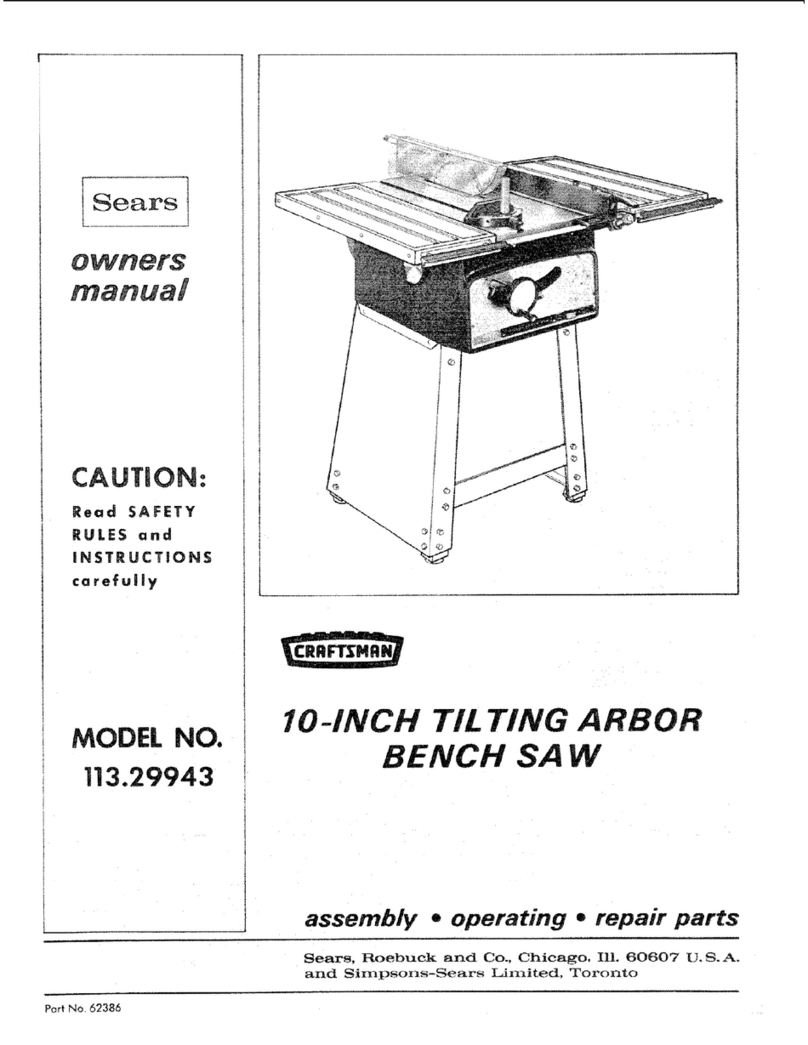ADDITIONAL SAFETY INSTRUCTIONS
FOR TABLE SAWS
WARNING: FOR YOUR OWN SAFETY, DO NOT
OPERATE YOUR SAW UNTIL IT IS COMPLETELY
ASSEMBLED AND INSTALLED ACCORDING TO THE
INSTRUCTIONS ... AND UNTIL YOU HAVE READ
AND UNDERSTOOD THE FOLLOWING.
1. GENERAL SAFETY INSTRUCTIONS FOR POWER
TOOLS... SEE PAGE 2
2. GETTING TO KNOW YOUR SAW... SEE PAGE 20
3. BASIC SAW OPERATION... SEE PAGE 23
4. ADJUSTMENTS... SEE PAGE 29
5. MAINTENANCE... SEE PAGE 32
6, STABILITY OF SAW
If there is any tendency for the saw to tip over or move
during certain cutting operations such as cutting
extremely large heavy panels or long heavy boards, the
saw should be bolted down.
If you attach any kind of table extensions over 24 in.
wide, make sure they are supported underneath by
sturdy 0race attached to saw base or bench.
7. LOCATION
The saw should be oositioned so neither the operator
nor a casual observer is forced to stand in line with the
saw blade.
8. KICKBACKS
Kickbacks can cause serious injury: A "Kickback"
occurs when a part of the workpiece binds between the
sawblade and the rip fence or other fixed object, rises
from the table, and is thrown toward the operator.
Keep your face and body ;o one side of the sawblade,
out of line with apossible "Kickback.'"
Kickbacks - and possible injury from them - can
usually be avoided by:
A. Maintaining the rip fence oarallel to the sawblade.
B. Keeong the sawblade sharp. Replacing
anti-kickback oawls when points become dull.
C. KeeDing_ sawblade guard, spreader, and
anti-kickback pawls in place and o 0erating properly.
The spreader must be in alignment with the
sawblade anG the oawls must stop a <ickback once
it has started. Check their action before ripping.
D. NOT ripping work that is twisted or warped or does
not have a straight eage to guide along the rip fence.
E. NOT releasing work until you have pushed it all the
way oast the sawblade.
F. Using a push stick for ripping widths of 2 to 6 in.,
and an auxiliary fence and push block for ripping
widths na-rower tnan 2 in. (See "Basic Saw
Operation Using The RiD Fence" section.)
G. NOT confining the cut-off piece when ripping or
cross-cutting.
H. When ripping apply the feed force to the section of
the workpiece between the saw blade and the rip
fence.
9. PROTECTION: EYES, HANDS, FACE, EARS, BODY
A. If any part of your saw is malfunctioning, has been
damaged or broken.., such as the motor switch, or
other operat]n 9 control, a safety device or the
power cord ... cease operating immediately until
the particular Dart is properly repaired or replaced.
B. Wear safety goggles that comply with ANS
Z87.1-1968, and a face shield if operation isdusty.
Wear ear plugs or muffs during extended periods of
operation.
C. Small loose pieces of wood or other objects that
contact the rear of the revolving blade can be
thrown back at the operator at excessive speed. This
can usually be avoided by keeping the guard and
spreader in 01ace for all thru-sawing operations
(sewing entirely thru the workJ AND by removing
all loose pieces from the table with a long stick of
wood IMMEDIATELY after they are cut off.
D. Use extra caution when the guard assembly is
removed for resawing, dadoing, rabbeting, or
molding - replace the guard as soon as that
operation is completed.
E. NEVER turn the saw "ON" _)efore clearing the
table of all tools, wood scraps, etc., except the
workpiece and related feed or support devices for
the operation planned.
F. NEVER place your face or body in line with the
cutting tool.
G. NEVER place your fingers or hands in the path of
the sawblade or other cutting tool.
H. NEVER reach in oack of the cutting tool with
either hand to hold down or support the workplece,
remove wood scraps, or for any other reason. Avoid
awkward operations and hand positions where a
sudden slip could cause fingers or hand to move
into a sawblade or other cutting tool.
I. DO NOT perform layout, assembly, or setup work
on the table while the cutting tool is rotating.
J. DO NOT perform any operation "FREEHAND"
always use either the rip fence or the miter gauge to
position and guide the work.
K. NEVER Use the rip fence when crosscutting or the
miter guage when ripping. DO NOT use the rip
fence as a length stop.
Never hold ent0or touch the free end'" of the
workpiece or a "free piece'" that is cut off while
power is "ON" and/or the sawblade is rotating.
L. Shtit "OFF" the saw and disconnect the power cord
when ,removing the table insert, changin£ the
cutting toot, removing or replacing the blade guard,
or making adjustments.
M. Provide adeauate support to the rear and sides of
the saw table for wider or tong workpieces,
N. Plastic and composition like hardboard) materials
may be cut on your saw. However, since these are
usually quite hard and slippery, the anti-kickback
pawls may not stop a kickback.
Therefore, be especially attentive to following
proper set-up and cutting procedures for ripping.
Do not stand, or permit anyone else to stand, in line
with a potential kickback.
O. If you stall or jam the sawblade in the workpiece,
turn saw "OFF", remove the workDiece from the
sawblade, and check to see if the sawblade s
parallel to the table slots or grooves ana if the
spreader is n proper alignment with the sawblade.
If ripping at the time, check to see if the rid fence is
parallel with the sawblade. Readjust as indicated.
10. KNOW YOUR CUTTING TOOLS
A. Dull, gummy, or improperly sharpeneu or _et cutting
tools can cause materia to stick, jam, stall the saw,
or kickback at the onerator.
Minimize potential injury by proper cutting tool
and machine maintenance.
NEVER ATTEMPT TO FREE A STALLED
SAWBLADE WITHOUT FIRST TURNING THE
SAW OFF.





